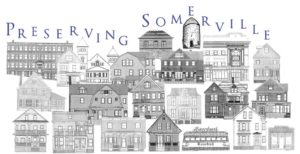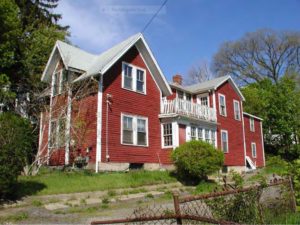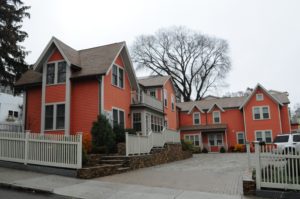
Winners to be selected, presented during Historic Preservation Month in May 2017
The Somerville Historic Preservation Commission (SHPC) is now accepting nominations for the 2017 Preservation Awards. During its annual celebration in honor of Historic Preservation Month in May 2017, the Commission will honor Somerville residents who performed significant restoration or maintenance efforts on designated historic buildings, or on non-designated buildings erected before 1966. The nomination period is open through Friday, Nov. 18, 2016.
Eligible property owners must have completed restoration and preservation work between January 2015 and December 2016. Owners may nominate their own property, or may be nominated by others in the community. Eligible projects include, but are not limited to, removal of inappropriate siding materials, repair or restoration of damaged or missing architectural details, removal of enclosed porches or inappropriate windows, repainting with historic colors, and additions that are “historically sympathetic.”
In addition to the formal award certificates from the City of Somerville and the Massachusetts State House, Somerville High School students will present winners with an original architectural rendering of their property. The awards ceremony will be held at the Somerville Armory during the City’s celebration of national Historic Preservation Month, in May 2017.
Nomination forms are available on the City Website at www.somervillema.gov/historicpreservation, the first floor lobby of City Hall, or the Preservation Commission’s Office on the second floor of City Hall.
For additional information, contact Brandon Wilson or Kristi Chase, Preservation Planner, at 617-625-6600, ext. 2525 or via e-mail (kchase@somervillema.gov orbwilson@somervillema.gov).
Here is an example of substantial work that was done on a designated historic property that won special attention by the SHPC in the past.
23 Porter – Former Farmhouse Earns Preservation Award!
Owner Interview by Marian Berkowitz, freelancer
Each year I interview as many property owners as I can that receive a Director’s or a Preservation Award from the City’s Historic Preservation Commission. All of the winners are proud of this City recognition, but some are harder to catch than others. This was certainly the case with the co-owner of 23 Porter Street, but I kept on trying as the work was so extensive, time consuming, and, I found, stunning in the end.
It is a rainy day and Gorka Brabo is always on the run, but we catch a few minutes for him to tell me about his work on a dilapidated, but quite historic farmhouse in the Spring Hill neighborhood. Gorka is a partner in the Lalo Development LLC, along with his brother, Laurentzi, and together they have served as a developer for many properties in Somerville, some of which are designated historic. Typically they work on older houses with architectural charm but that need a lot of TLC that they retain and continue to manage as rental properties.
The house at 23 Porter Street sits on a large lot that was owned for over 60 years by the Haviken family, who ran a local plumbing business. For many years, it served as a rental property with four apartments until the last owner, Elm Oak Realty Trust, put it on the market in 2010. Lalo Development LLC had a vision for the property and decided to purchase it for major restoration work that would be suitable for family members, among others.
Gorka recalled that the house’s deplorable condition required essentially gutting it down to the studs in order to do significant structural work. Normally, I meet owners who say they only need to replace some of the original siding, but in this case, Gorka said they found termites and every single piece of siding needed to be removed. When they removed the mesh support, the house seemed to “shake,” which was more than they had expected. They then decided to convert the elongated house to an L-shaped building that was consistent with a vernacular style “rambling” farmhouse, in which they would construct three separate units.
In keeping with the farmhouse motif, they painted it a reddish orange with putty colored trim and installed a dry stacked stone wall, extensive plantings, and wood fencing to complement the fully restored structure. Even on this dreary grey day, it’s a beautiful and unique architectural addition to the streetscape as can be seen in the BEFORE and AFTER photos.

23 Porter St. (before)

23 Porter St. (after)















Reader Comments